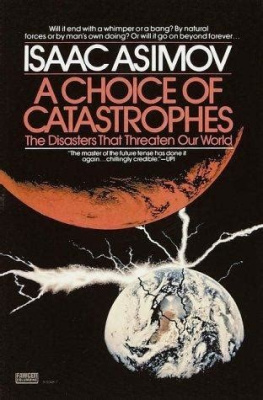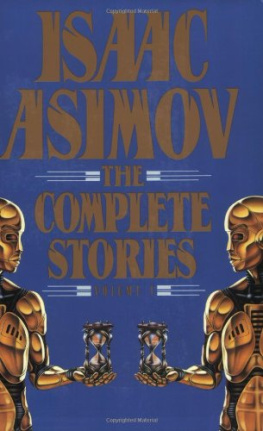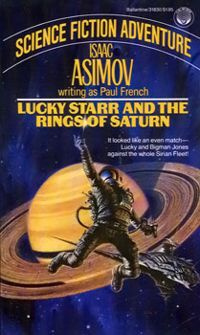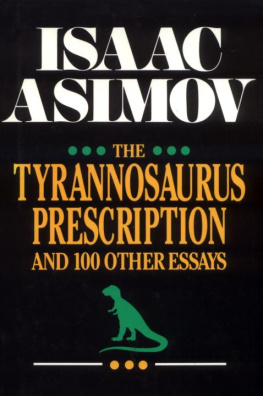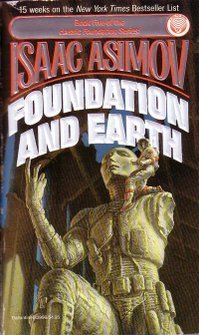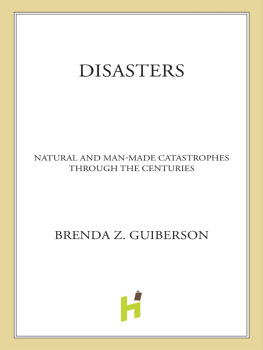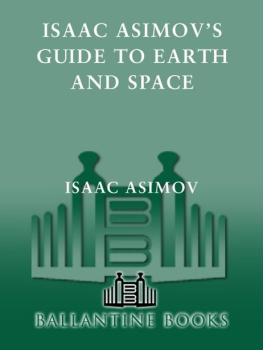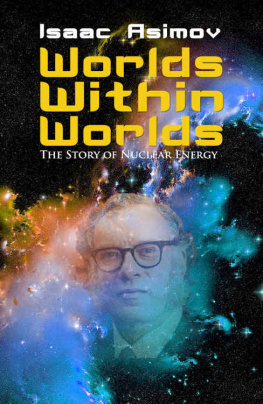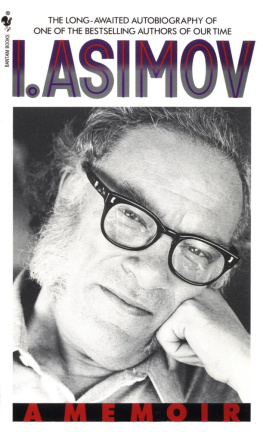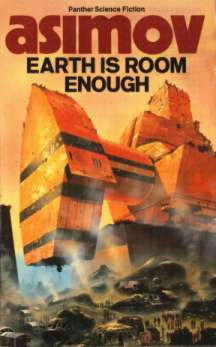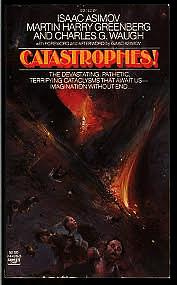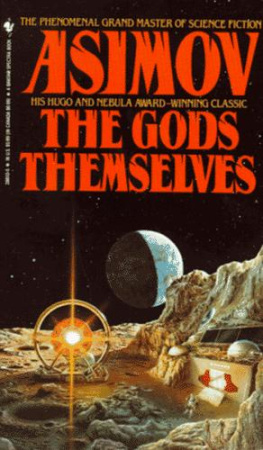A Choice of Catastrophes
The disasters that threaten our world
Isaac Asimov
Copyright Isaac Asimov 1979
Contents
- PART ONE
Catastrophes of the First Class - PART TWO
Catastrophes of the Second Class - PART THREE
Catastrophes of the Third Class - PART FOUR
Catastrophes of the Fourth Class - PART FIVE
Catastrophes of the Fifth Class
To Robyn and Bill
may they find Fortunes face
a smiling one always
Introduction
The word catastrophe is from the Greek and it means to turn upside down. It was originally used to describe the denouement, or climactic end, of a dramatic presentation and it could, of course, be either happy or sad in nature.
In a comedy, the climax is the happy ending. After a spate of misunderstandings and sorrow, everything is turned upside down when the lovers are suddenly reconciled and reunited. The catastrophe of the comedy is, then, an embrace or a marriage. In a tragedy, the climax is the sad ending. After endless striving, everything is turned upside down when the hero finds that fate and circumstance defeat him. The catastrophe of the tragedy is, then, the death of the hero.
Since tragedies tend to strike deeper than comedies do and to be more memorable, the word catastrophe has come to be associated more with tragic endings than with happy ones. Consequently, its now used to describe any final end of a calamitous or disastrous natureand it is with that kind of catastrophe that this book deals.
The final end of what? Of ourselves, of course; of the human species. If we regard human history as a tragic drama, then the final death of humanity would be the catastrophe in both the original and the present sense. But what could bring about the end of human history?
For one thing, the entire universe might so change its properties as to become uninhabitable. If the universe became deadly and if no life could exist anywhere within it, then humanity could not exist either, and that would be something we might call a Catastrophe of the First Class.
Naturally, the entire universe need not be involved in something that would suffice to bring about an end to humanity. The universe might be as benign as it now is and yet something might happen to the sun that would make the solar system uninhabitable, in that case, human life might come to an end even though all the rest of the universe might be proceeding on its way smoothly and peacefully. This would be a Catastrophe of the Second Class.
To be sure, though the sun might continue to shine as evenly and as benevolently as ever, the Earth itself might undergo the kind of convulsion that would make life impossible upon it. In that case, human life might come to an end even though the solar system continued on its routine round of rotations and revolutions. This would be a Catastrophe of the Third Class.
And though Earth might remain warm and pleasant, something might happen upon it that would destroy human life, while leaving at least some other forms of life untouched. In that case, evolution might continue and Earth, with a modified load of life, might flourishwithout us. That would be a Catastrophe of the Fourth Class.
We might even go one step farther and point out the possibility that human life might continue, but that something would happen that would destroy civilization, interrupting the march of technological advance and condemning humanity to a primitive lifesolitary, poor, nasty, brutish, and short-for an indefinite period. This would be a Catastrophe of the Fifth Class.
In this book, I will take up all these varieties of catastrophes beginning with the first class and following with the others in order. The catastrophes described will be successively less cosmicand successively more immediate and dangerous.
Nor need the picture so drawn be one of unalloyed gloom, since it may well be that there is no catastrophe that is not unavoidable. And certainly the chances of avoiding one increase, if we stare the catastrophe boldly in the face and estimate its dangers.
PART ONE
Catastrophes
of the First Class
1
The Day of
Judgement
RAGNAROK
The conviction that the whole universe is coming to an end (the catastrophe of the first class mentioned in the introduction) is an old one, and is, in fact, an important part of Western tradition. One particularly dramatic picture of the end of the world is given to us of the Western tradition in the myths that originated among the Scandinavian peoples.
The Scandinavian mythology is a reflection of the harsh, subpolar environment in which the hardy Norsemen lived. It is a world in which men and women play a minor part, and in which the drama rests in the conflict between gods and giants, a conflict in which the gods seem at a perpetual disadvantage.
The frost-giants (the long, cruel Scandinavian winters) are undefeatable, after all, and even within the beleaguered fortress of the gods themselves, Loki (the god of the fire that is so essential in a northern climate) is as tricky and as treacherous as fire itself is. And in the end there comesRagnarok, which means the fatal destiny of the gods. (This term Richard Wagner made better known as Gtterdmmerung, or twilight of the gods, in his opera of that name.)
Ragnarok is the final decisive battle of the gods and their enemies. Behind the gods come the heroes of Valhalla who, on Earth, had died in battle. Opposed are the giants and monsters of a cruel nature led by the renegade, Loki. One by one the gods fall, though the monsters and giantsand Loki, tooalso die. In the fight, the Earth and the universe perish. The sun and the moon are swallowed by the wolves who have been pursuing them since creation. The Earth catches fire and bakes and cracks in a universal holocaust. Almost as an insignificant side issue to the great battle, life and mankind are wiped out.
And that should, dramatically, be the endbut it isnt.
Somehow a second generation of gods survives; another sun and moon come into being; a new Earth arises; a new human pair comes into existence. An anticlimactic happy ending is tacked on to the grand tragedy of destruction. How did this come to be?
The tale of Ragnarok, as we now have it, is taken from the writings of an Icelandic historian, Snorri Sturluson (11791241). By that time, Iceland had been Christianized and the tale of the end of the gods seems to have suffered a strong Christian influence. There were, after all, Christian tales of the death and regeneration of the universe that long antedated the Icelandic tale of Ragnarok, and the Christian tales were, in turn, influenced by those of the Jews.
MESSIANIC EXPECTATIONS
While the Davidic kingdom of Judah existed, prior to 586 BC, the Jews were quite certain God was the divine judge who meted out rewards and punishments to individuals in accordance with their deserts. The rewards and punishments were handed out in this life. This confidence did not survive defeat.
After Judah had been cast down by the Chaldeans under Nebuchadnezzar, after the Temple had been destroyed and many of the Jews brought to exile in Babylonia, there grew up a longing among the exiles for the return of the kingdom and of a king of the old Davidic dynasty. Since such desires, too plainly expressed, represented treason to the new non-Judaic rulers, the habit arose of speaking of the return of the king elliptically. One spoke of the Messiah; that is, the anointed one since the king was anointed with oil as part of the ritual of assuming office.
The picture of the returning king was idealized as introducing a wonderful golden age and, indeed, the rewards of virtue were removed from the present (where it manifestly was not taking place) and put into a golden future.
Next page
